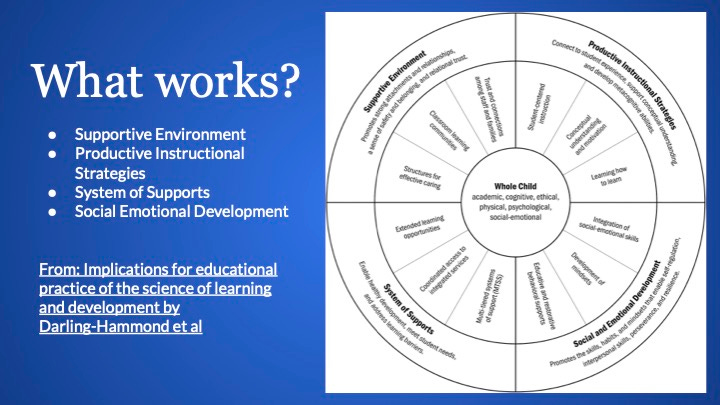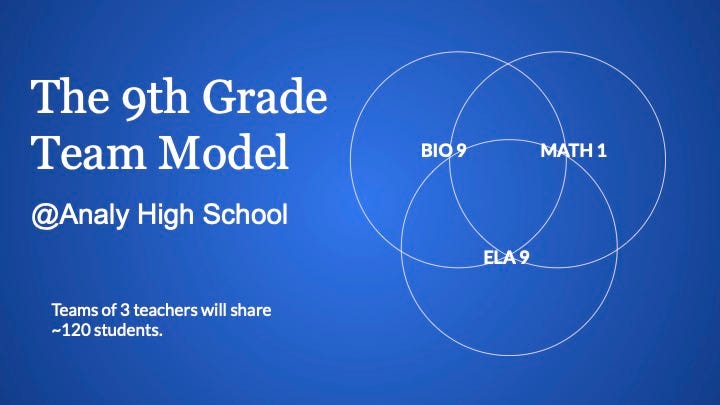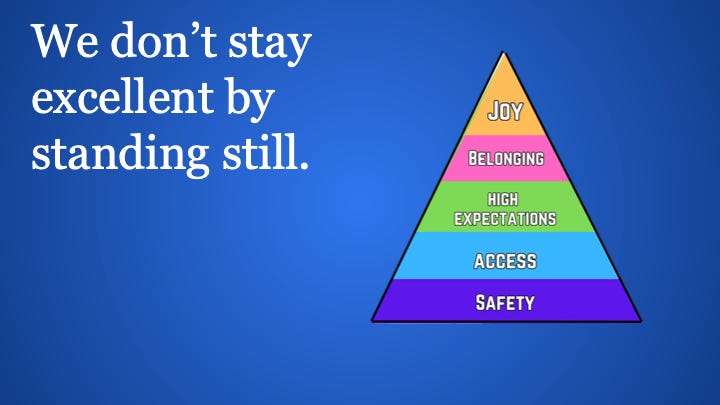The 9th Grade Cliff
A proposal for "success teams" at Analy could help ease the transition to high school for incoming ninth graders
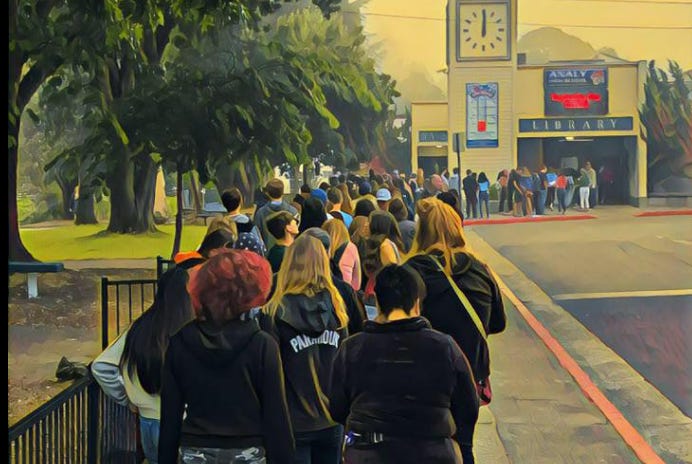
The West Sonoma County Union High School Board Meeting was held last Wednesday in the Analy Library, which was re-carpeted and re-painted over the summer. The only member of the public attending the meeting in person was me. Yet, that could be seen as a good sign.
At recent Santa Rosa City Schools board meetings, the public has been lined up outside the door to follow the board’s decisions on proposed budget cuts. At WSCUHSD board meetings this school year, there have been no contentious issues. The trustees, the superintendent and the staff are working together well — all on the proverbial same page. There were, however, two items of interest, one minor and the other more important, which the public missed by not attending this meeting.
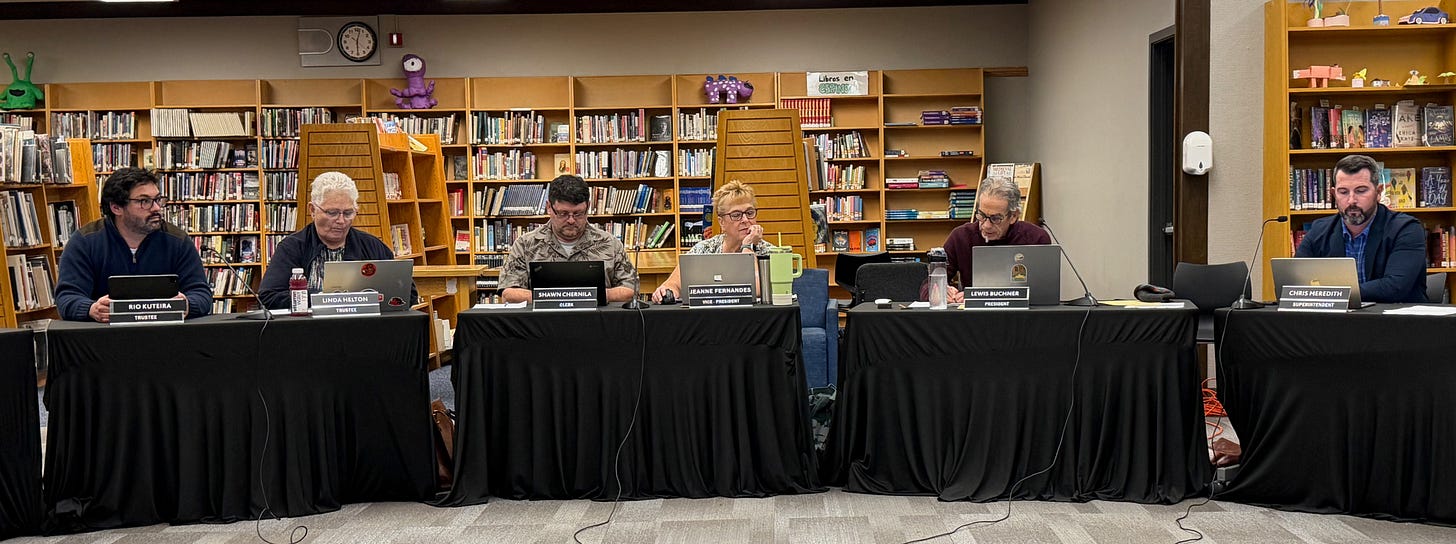
Trading in one acronym for another
The board approved a proposal to rebrand or rename the Diversity, Equity and Inclusion (DEI) committee to the Access and Belonging Committee (ABC). Board President Lewis Buchner, who was a leading force in the formation of the committee in 2022-23, said that the “committee is doing well and is getting down to business.” He added that “DEI has become a target” and the committee didn’t want the good work it is doing to become some kind of political issue.
To be clear, the DEI work will continue but the committee will now be known as ABC.
The 9th grade “success teams”
Analy Principal Chuck Wade presented a proposal for a new model of integrating 9th grade students into the school. (His full slide-deck is attached as a PDF at the end of the article.) Principal Wade’s talk gave the “why, what and how” for creating teams of three teachers and 120 freshmen to ease the transition into high school and deal with the unique challenges that students face today.
The Sebastopol Times interviewed Wade the day after the meeting, asking him to explain his proposal.
What’s the ninth grade cliff that you talked about last night?
The ninth grade is kind of the “make or break” year. There’s a lot of research around this, including a famous book out of Chicago public schools called “The Make or Break Year” by Emily Phillips. She studied Chicago’s huge school district and tracked a whole bunch of students and what happens in the 9th grade turns out to be so important nationwide. Ninth grade students who fail one of their core classes are four times less likely to graduate than students that don’t fail one. Here at Analy, we have twice as many Fs in ninth grade than in any other grade. It’s a big transition for our students. We’ve got students coming in with increased anxiety compared to earlier years, more referrals, more instances of assertive discipline.
It’s a big transition for them. We have a little bit of transition shock around here. Most of our feeder schools are much, much smaller in comparison to the comprehensive high school, going from a couple hundred students, most of them, to 1,500. In addition, it’s a major transition for our incoming ninth grade students to have nine different teachers with nine different ways of doing things and nine different classrooms all over the big campus. So, for some of our students who are already suffering from some anxiety issues and other kinds of challenges, which is common with our young people right now, it’s a really overwhelming challenge, and that’s the cliff.
So, if kids get in trouble in ninth grade, it’s really hard to catch up, and it impacts their life outcomes overall. There’s a ton of evidence showing that if we can get them on track while they’re ninth graders, then their chances for graduating on time, matriculating to a college or a career that they’re interested in or their health outcomes, their livelihood, their happiness, all of that stuff.
It doesn’t look so good if they don’t do well in ninth grade. So, supporting our ninth graders is an upstream investment, so to speak. It’s one of those places that we can invest and see dividends down the line for students to make their lives better.
Things have changed on this campus in the last few years, right? Not only have we integrated El Molino students and West County students here, but we have the largest enrollment area in the county, the largest number of feeder schools, and a large number of interdistrict transfer students. For the first time at Analy, in the last five years or so, students who didn’t grow up knowing they were going to come to Analy are here. We have to work a little bit harder to help them find their place here and to help them feel like this is their campus and it belongs to them. It’s super important in terms of their engagement here and their feeling like they have a chance to access all the amazing experiences that we have.
Along with a group of teachers, you visited some schools last year to explore how others are doing a range of things differently. This ninth grade kind of program is one of the things that you can trace back to those visits.
There’s actually been two visits now. Almost a little shy of 20% of our certificated staff (teachers) have been on one of the two trips visiting schools in San Diego and Mesa, Arizona. In particular, we were looking at how those schools are leveraging high-quality collaboration structures, and how they’re working in teams to better support their students. A whole bunch of things have resulted from the two trips. We have already implemented a pilot cohort in ninth grade. We called it “Words and Wonders.” Blake Leibovitz in English and Ari Sturr in art have the same set of 60 students. They have those students scheduled back to back so that they have an opportunity to get them all together in the same room if they want to and do things together. That was our initial pilot for what it could look like in ninth grade.
We have a team of teachers and other staff on this campus that have been meeting monthly and studying what’s happening with “Words and Wonders” and how it’s working and what isn’t working. The discussions that came out of those meetings have led to this new model that we’re proposing for next year.
The other thing that came out of the trip last year is our houses program, which is designed to create connections across campus with staff and students who otherwise really wouldn’t have a chance to connect. That’s been pretty fun.
Are the houses made of students from all grade levels?
Everybody on campus is assigned to one of four houses. We have opportunities for friendly competition. In the last couple of weeks, we had what was called the Duck Hunt. House–based teams could discover little rubber ducks all over campus and get points for finding them. We have an app called FiveStar that we use to give participation points for certain things like going to sporting events, for example, or a dance performance or a choir or drama or band performance. It’s actually been an interesting way to help us identify students who aren’t plugging in somewhere. and try to understand the reasons why.
What’s the new proposal that you presented for next year?
The presentation to the board looked at three parts: the why and the what and the how. The ninth grade cliff is really the why. There are also more specific things here at Analy that are important in terms of why we need to do this.
The what piece comes from research from Linda Darling-Hammond on school reform. What kinds of things are required to make folks really excited about being in school? They include those relationships that students have with each other and with staff in a safe, inclusive climate. They are culturally responsive teaching, deeper learning experiences, opportunities for students to make their own meaning out of things and student-centered learning as well as equity-based authentic assessment practices.
Then in terms of actually how we’re going to operationalize it for next year, we’re going to team teachers in English, in biology, and in math for 9th grade. Those three teachers will have the same group of students in common. Those students won’t necessarily be a cohort. In other words, the same group of 30 kids won’t travel from class to class together, but rather a group of 90 to 120 students will have the same set of three teachers. The teachers can be flexible in terms of the periods that they are scheduled in. Each of the teachers will teach three or four sections of those ninth grade courses. They’ll have one or two other sections that they teach also. Teachers will have a shared prep period, and we think that’s really important in addition to their common planning time. This gives them an opportunity to talk about their students in common.
This is one of those things that research shows again and again is really the highest leveraged structural practice in terms of student achievement, giving teachers an opportunity to talk about kids. They will know things or learn things from each other about what works, about what’s going on at home with a student, about what the kinds of curriculum that they can create to target individual students and help them be successful and address their interests. So that common prep is super important.
Does the team also include support staff?
Yes, we are going to fold in our supports to those teams, as much as can. That includes our resource teachers, our special educators, our paraeducators, our multilingual learner support. We want them to be embedded in those teams as much as possible. We have to figure it out structurally and financially, but that’s really the goal.
Why does having teams that include support services make a difference?
It’s really the multiplier effect of having teachers with students in common and working together. So that collaboration really allows them to learn more about their students, to talk about those students in common, to discover what’s working with this kid? What’s going on at home? Do we know what’s happening with the sister? All of those kinds of things that come up in conversation about students that they know together. When you don’t have that, when you teach in isolation, and you don’t have an opportunity to check in with a colleague about kids, you’re missing a ton. We just want to build the structure that makes it possible for them to take advantage of each other, to support each other and to provide opportunities for them to really design together targeted interventions that will best support those students in common. It’s super powerful.
Even if we do nothing else but create the structure that makes it possible, we’re going to see some gains in terms of the built-in sort of wraparound support that comes from caring adults talking about their shared students.
Can you talk about how you will handle math in these teams?
Math will be a little bit different. Most of our ninth grade students come into Math 1. We have an integrated math one, two, and three system.
Does Math 1 include Algebra 1?
No, not exactly, but yes, most of Algebra 1 is contained in integrated Math 1. There’s some algebra in Math 2 as well. So, it’s a little bit different, but some of our students, depending on their backgrounds, will place out of Math 1. So, they’ll be in Math 2 or or 2A. We’ll also still maintain our resource math class next year. That will result in our 9th grade math classes being a little bit smaller than the other classes, which we think is a benefit.
Math is a real gatekeeper for students, and we need them to really be successful in ninth grade math. Math really matters. Students need to be successful in ninth grade or some doors close. We want to do our best to give students all the opportunities for success, as well as to identify students who can excel that might not know it yet. We really want to give them a lot of support.
You said last night that this may not be perfect. Board President Lewis Buchner said that it is good to try new things and learn from them. That’s how to innovate.
I think anybody in education at this moment will tell you that things are changing. Our students’ needs and our families are changing. The larger structures in public education are changing. We’re going to have to change too, right? I don’t think I can say that we know all the answers about what’s going to work best for ninth grade, but I do know, as I said in the beginning of the presentation yesterday, we don’t stay excellent by standing still. So, I really do feel strongly that we’re going to have to try some new things in order to provide the highest quality support for our students and that’s what we’re going to try to do.
After Wade’s presentation to the Board, math teacher Alex Wilson and science teacher Kim McCrory talked about why they supported this proposal.
Wilson began by saying that his grandfather and father went to Analy, and he went to Analy; he hopes his son in ten years will go to Analy. “We shouldn’t just talk about what Analy was or is but what it aspires to be.” He offered the practical example of how students get different, often confusing, instructions from each of their teachers in different classes. Wilson said that what students need is:
Simple systems that create complex actions socially and academically.
But what students confront instead is:
Complex systems that create simple actions socially and academically.
If teachers were working together and were consistent in messaging, the whole team could be on that proverbial same page.
“I love that Alex sees so clearly what the problem is and how we might fix it,” said Wade in the interview. “He mentioned that he was initially a skeptic and so I think it was powerful to hear from him.” The board was very encouraging about the “success teams” model. “I’m thrilled,” said Trustee Jeanne Fernandes. “I couldn’t be more excited.”



